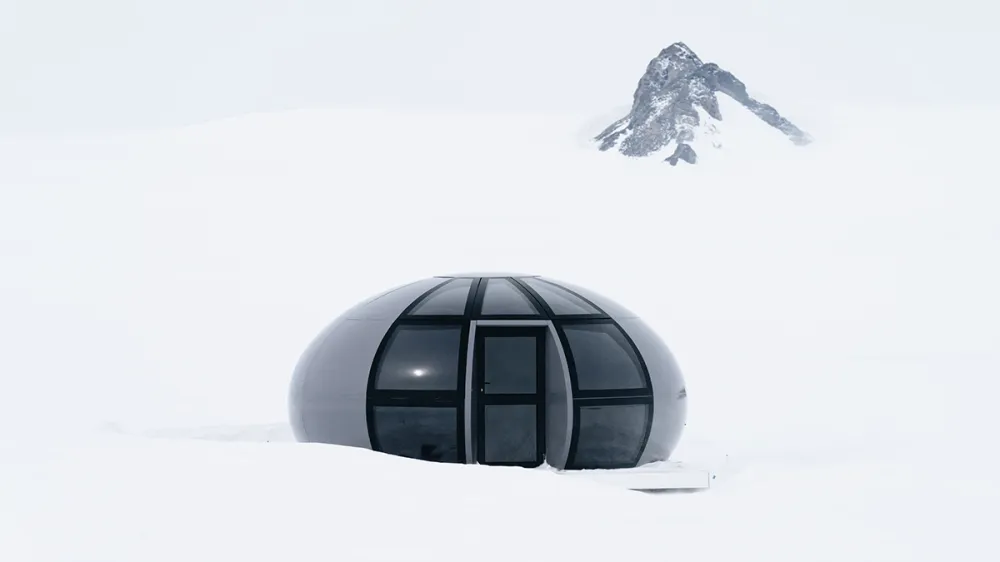In the summer, Antarctica can feel like Athens, with more than 100,000 visitors each year. Evading that traffic is the key to having an authentic South Pole experience.
For better or for worse, the 2023-2024 travel season was a banner year for tourism in Antarctica. While IAATO, Antarctica’s association of tour operators and the continent’s de facto tourism authority, has yet to release the season’s official statistics, they’re expected to shatter last year’s record of 105,331 visitors, which, in turn, reflected a more than 40 percent increase over the chart-topping pre-pandemic season of 2019-2020.
The vast majority of travelers arrived on cruise ships that set off from ports in South America and sailed around the northern tip of the Antarctic Peninsula. This 311-mile stretch of icebergs, glaciers, and snow-covered peaks is home to the continent’s most popular landing sites—Neko Harbour, Whalers Bay, and gentoo penguin–populated Cuverville Island—that saw around 20,000 visitors (each!) step foot on its shores last year. In other words: It’s getting crowded.
On Queen Maud Land, a pizza slice–shaped Antarctic territory some 1,860 miles to the east, luxury tour operator White Desert takes a different approach. As satellites to Wolf’s Fang, Antarctica’s only private aircraft runway set atop a mile-thick slab of ice, White Desert‘s three 12-person polar camps allow guests to witness the White Continent in a way that has long been exclusive to scientists and intrepid explorers. The visitor tally? A maximum of about 250 per season—for all three camps combined—all of whom arrive by charted jet, rather than cruise, via Cape Town.
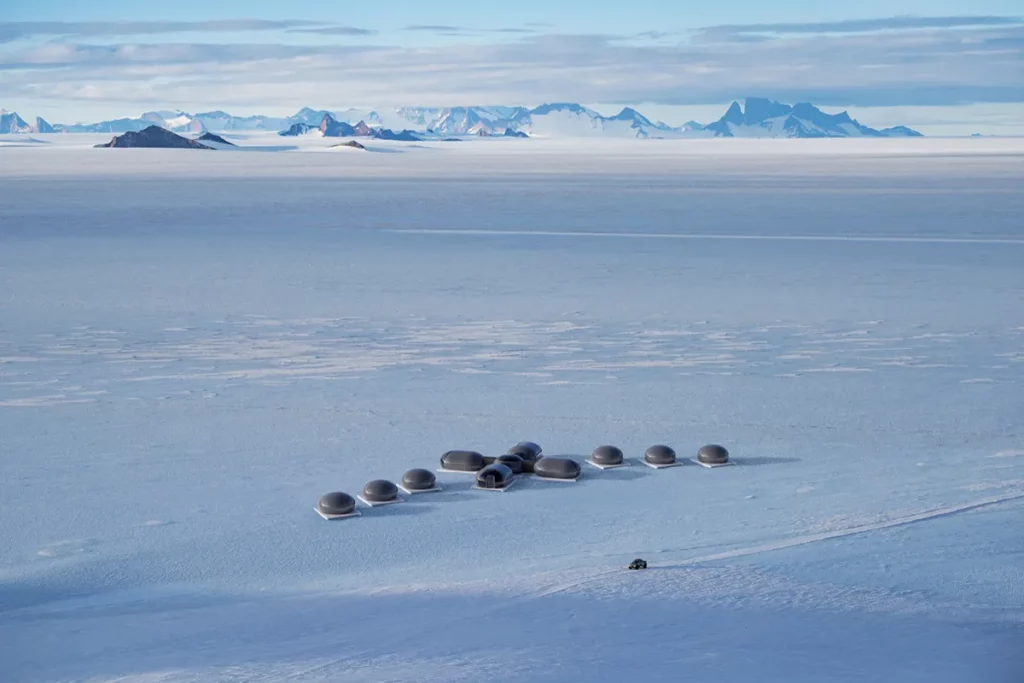
“I wanted to create something far more bespoke [than a cruise],” says Patrick Woodhead, the record-holding polar explorer who cofounded White Desert in 2005. “When it’s only 12 of you observing a colony of some 20,000 penguins, it’s a nigh-on spiritual experience. But if you’re one of 200 guests, following a marked path to see the penguins, you lose that sense of serendipity.”
White Desert doubled down on that serendipitous slant with the late-2022 launch of Echo, its third camp comprising six ellipsoid “sky pods” from fiberglass and a communal hub housing a dining room, lounge. and hot shower facilities. (It’s also one of Robb Report‘s 50 Best Hotels in the World.) Departing from the Shackleton-inspired leather-and-brass look of White Desert’s first outpost, Whichaway Camp in the ice-free Schirmacher Oasis, Echo’s design is decidedly more futuristic. Inspired by observations from astronauts such as Terry Virts and Buzz Aldrin, who visited White Desert in previous years and likened Antarctica’s icy expanse to an extraterrestrial landscape, Woodhead designed the camp as an intergalactic space station with clean lines, high-design furniture, and a 320,000-dollar light sculpture by British American artist Anthony James in one of the cashmere blanket–clad lounges.
It’s an apt aesthetic for a camp pitched up in a location that does, indeed, look and feel otherworldly. Through the floor-to-ceiling windows at the foot of each bed, the Antarctic interior unfurls into a seemingly infinite sprawl of snow and ice. The white nothingness is only broken by the knife-edged granite peaks of the Drygalski Mountains on the blue-hued horizon, most of which no human has ever set foot on. When viewed from a rocky ridge at the back of the camp, Antarctica’s immense scale hits in a way no cruise possibly could.
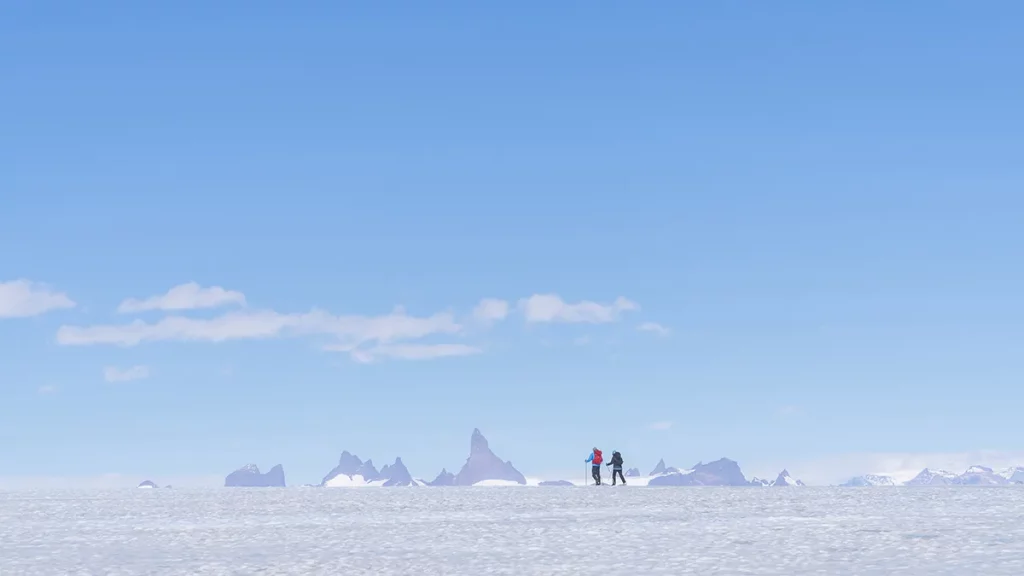
Activities around the camp bring guests closer to the landscape’s extreme features. They could include rock-climbing and abseiling at nearby nunatak mountains, cross-country ski trips, and expert-guided camp outs in near-untrodden valleys. Depending on weather conditions (in this remote corner of the globe, nature always has the upper hand), White Desert’s ski-equipped Basler BT-67 planes bring guests on day-trips further afield. There are visits to Atka Bay, home to one of the largest Emperor Penguin colonies on the planet, and (at a surcharge) expeditions to the rarely visited Geographic South Pole that include an overnight at Dixie’s Camp, an ultra-remote tented base whose nearest neighbor is the International Space Station that circles some 250 miles overhead.
All this, of course, comes at a price. Rates for a week-long stay at Echo start from $71,500 per person, which not only help fund White Desert’s mind-boggling logistics (all things considered, a simple can of Coke has racked up $37 in transportation costs by the time it reaches the camp) but also contributes to the company’s soon-to-launch White Desert Earth Foundation, which will support investments in sustainable science and education—including a green tech hub at Echo camp.
Still, spots for the three-month travel season book out well in advance.
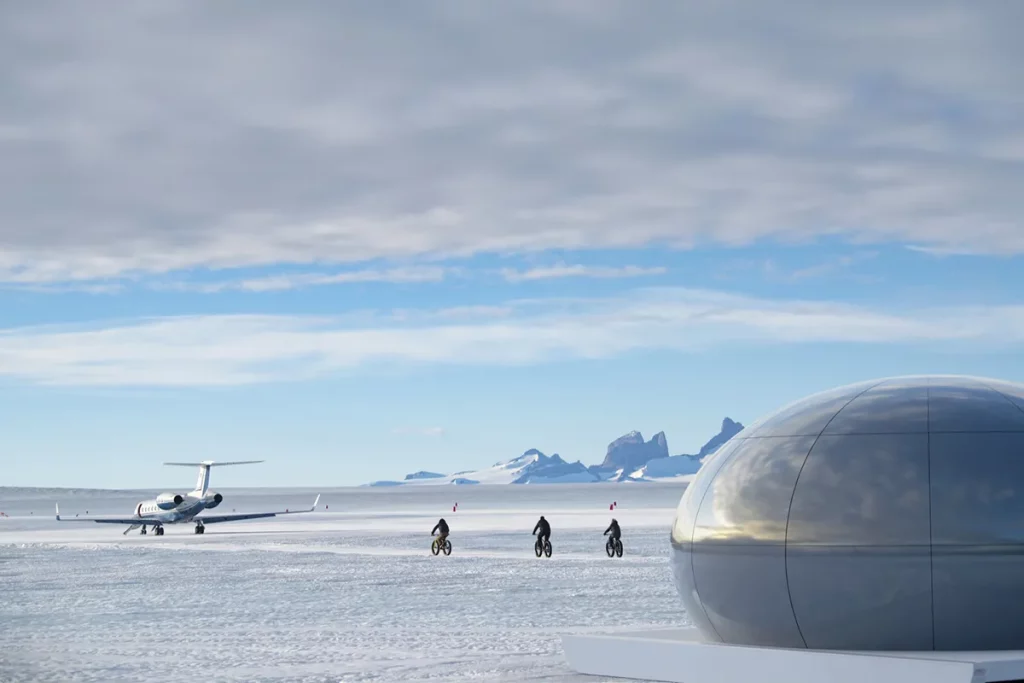
“High-net-worth travelers are increasingly prioritizing learning and discovery over conventional luxuries,” says Tom Cahalan, cofounder of travel agency Dorsia Travel, whose UHNWI clients happily shell out six-figure sums for such one-of-a-kind experiences. “For them it’s much more valuable to have the privilege of staying in such a special setting than bedding down in a Four Seasons. The exclusive experience White Desert offers makes it highly personal and fully bespoke, while a traditional cruise is much more hands-off and formalized in comparison. More importantly, coming so close with nature makes visitors fully realize the impact their trip makes on this environment.”
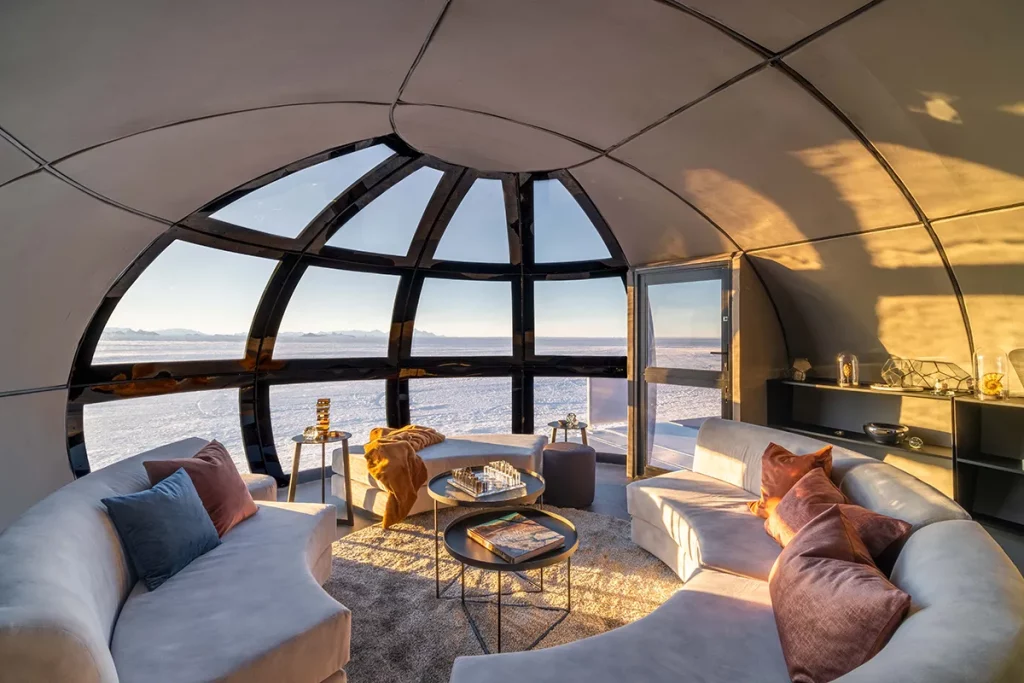
With its fine-dining meals, Champagne picnics, and massage treatments at the drop of a hat, White Desert manages to turn a trip to one of Earth’s most inhospitable corners into an ultra-luxurious experience. Yet, you’ll find the inner-Antarctica’s ethereal and immense landscape leave the deepest impression.
“You have this amazing sense of humility when you come out here, there’s very little ego,” Woodhead says. “It’s humbling when Mother Nature dictates what you can and can’t do. She makes all the rules and forces us to pay attention.”

